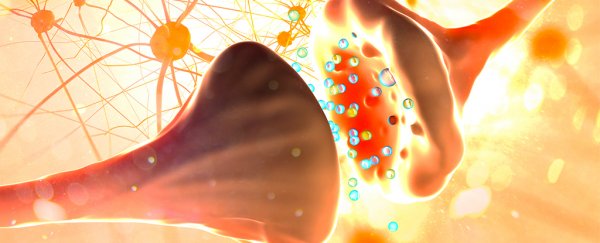Numerous studies over the years have identified a plethora of genes associated with autism spectrum disorder ( ASD). While we have a general idea of how these genes behave, knowing what they do on a cellular level has been hard to study.
University of California San Francisco (UCSF) researchers have now mapped the expression of genes inside single neurons taken from children with ASD, revealing potential differences that help explain why some of those cells have such a hard time getting connected.
Autism isn't described as a spectrum for nothing. Not only does it vary in severity, the diverse array of characteristics makes for an incredibly complex condition that we're still struggling to understand.
Yet in spite of the complicated mix of genes and environmental influences believed to be responsible for ASD, some factors remain consistent. One example is the conversation of certain genes expressing themselves throughout neurological development.
This genetic chatter, called a transcriptome, has been measured in tissues taken from areas such as the frontal cortex and cerebellum, revealing significant differences between the brains of people with an ASD diagnosis and those without.
Collecting transcriptomes from tissue samples is like eavesdropping on the excited buzz of a crowd at a party. It has its uses in the diagnosis of ASD, but what researchers really wanted was to hear what individual guests had to say.
Since autism could in part be caused by neurons struggling to connect in ways we might expect, it's important to describe those unique genetic translations on a cellular level if we're to come up with effective treatments.
"Identifying genetic changes that occur at conception or in utero is important for understanding the causes of autism, but these insights are unlikely to result in useful therapeutic targets," says neurologist Arnold Kriegstein.
"If we want to be able to offer treatments to these children when they come to our attention, it's the altered brain circuits that we're going to have to tackle."
Extracting a transcriptome from a targeted cell isn't a walk in the park, which is why we haven't seen this before. UCSF science writer Nicholas Weiler uses the wonderfully colourful description of teasing apart neurons as "playing Jenga with Jell-o".
So rather than trying to untangle a knotted mess, the team extracted RNA from the isolated nuclei of neurons in snap-frozen specimens of cortical tissue taken during the post-mortem of 15 children and adolescents with an ASD diagnosis, and 16 without. Then, they identified what types of cells they were looking at based on their gene expression signatures.
Since seizures tend to be more common among children with autism, tissue samples taken from individuals with epilepsy were also analysed for comparison.
Around 100,000 nuclei later, the team could pinpoint differences in the expressions of genes associated with communication between neurons across their synapses.
Specifically, the individual cells holding these awkward conversations were in the top layers of the neocortex, including projection neurons that extended out to other regions, as well as microglia – defensive non-signalling cells that manage connectivity.
Comparisons also helped confirm there was a relationship between ASD severity and the degree of expression in key genes within these cell types.
Now that researchers have a better idea of which cells in the brain express relevant autism genes in significant ways, future studies should have an easier time working out exactly what they do, and why the brains of people with ASD connect the way they do.
More importantly, this could also lead to therapies for individuals who struggle to cope with some of the condition's more challenging characteristics.
"It was very exciting to see such clear convergence on specific cell types that appear to be altered in all of these patients," says molecular biologist Dmitry Velmeshev.
"This offers hope that some point in the future there could be a widely applicable therapy for many different patients with the disease."
This research was published in Science.
